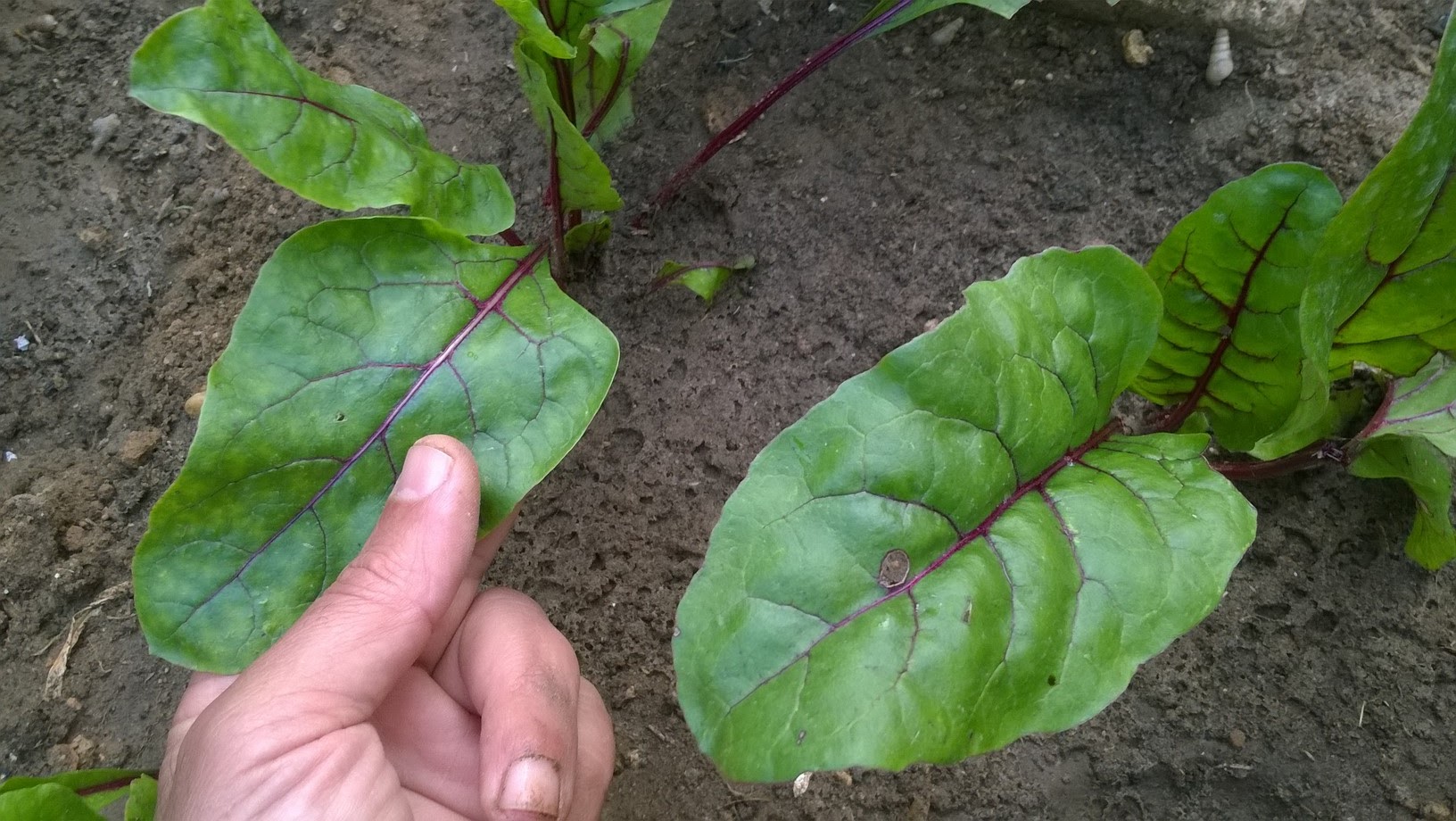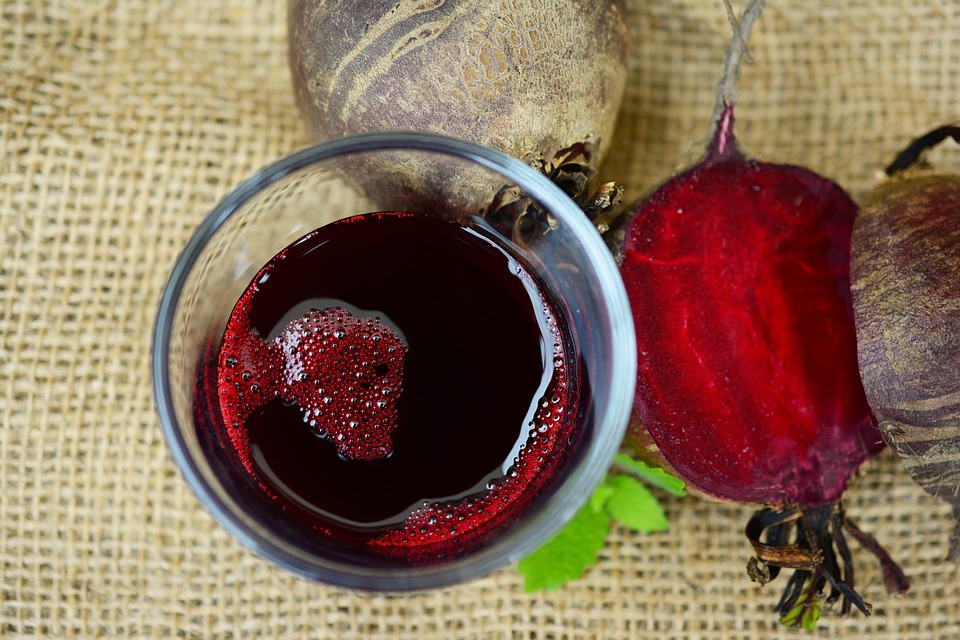The History of Beetroot
Historically, beet greens were used for their healing properties. Hippocrates believed that the juice from beetroot leaf bindings would help heal wounds. Today, beet greens are used in various dishes, and can be added to salads.
Beetroot Leaves Nutrition Facts
1 cup of raw beet greens (about 38 grams) contains:
- Calories: 8.4 k cal
- Carbohydrates: 1.7 grams
- Protein: 0.8 grams
- Calcium: 44 mg or 3% of the DV
- Iron: 1mg or 6% of the DV
- Magnesium: 7% of the DV
- Manganese: 6% of the DV
- Potassium: 6% of the DV
- Phosphorus: 2% of the DV
- Selenium: 1% of the DV
- Zinc: 1% of the DV
- Vitamin A: 13% of the DV
- Vitamin B1: 3% of the DV
- Vitamin B2: 6% of the DV
- Vitamin B3: 1% of the DV
- Vitamin B5: 2% of the DV
- Vitamin B6: 3% of the DV
- Folate: 1% of the DV
- Vitamin E: 3% of the DV
- Vitamin K: 127% of the DV
When purchasing fresh beetroots, you are very likely to find them bunched together with their colorful leafy greens adorning their tops. While many people can cut off these greens and only consume their round root portion, let tell you that beet greens are actually the most nutrient-rich part of the plant and provide amazing health benefits, and especially if you grow beetroots your self at home!
You want to read: How to grow organic beetroot
Health Benefits of Beetroot Leaves
Beetroot leaves are are packed with high amounts of vitamins and nutrients, including vitamins A, B6, C and K, as well as being rich in iron, potassium and magnesium. The leaves are very low in calories, making them an excellent source of nutrients while on a low-calorie or low-fat diet.
What are Beet Greens?
Beet Greens Improve Mental Health
Beet greens boost your mood and improve your mental health. Beet greens contain high amounts of Vitamin B6. Vitamin B6 improves mood and boosts depression.
Beet greens are also high in Vitamin K, which can reduce and limit damage to neurons in the brain. This means that Vitamin K may slow the progression of Alzheimer’s disease.
Beet Greens Boost Blood Health
Beet greens are high in B vitamins, B vitamin is vital for creating red blood cells and neurotransmitters. including folate, which helps form healthy red blood cells important for carrying oxygen to tissues. Beet greens containing more iron than spinach, improve blood health by preventing and treating anemia.
Iron is a vital part of hemoglobin, the substance found in red blood cells that transports oxygen from your lungs throughout your body. If your body is low in iron, then you can’t make enough oxygen-carrying red blood cells. Every cell in your body needs iron, and beet greens are a rich source of iron to improve your blood health.
Beet Green Improve Eye Health
Beet greens are a good source of lutein and zeaxanthin, beneficial for the eyes. These nutrients promote eye health by protecting against oxidative stress.
Beet Greens Boost Immunity
Beet greens are high in Vitamin C, this Vitamin is essential for boosting immunity. Vitamin C plays a crucial role in helping improve your immune system. 100 g of fresh beetroot leaves contain 30 mg or 50% of daily recommended levels of vitamin-C. Vitamin-C is a powerful antioxidant, which helps the human body develop resistance against infectious agents and scavenge harmful oxygen-free radicals.
Beet Green Promote Health Teeth
Beet greens are high in calcium, magnesium, and Vitamin D that promote strong teeth. consuming Foods high in calcium and magnesium help to build strong enamel which prevents cavities. Vitamin D is essential for aiding calcium absorption.
Beet Greens Prevents Obesity
Beet greens are a good source of soluble and insoluble fiber. Which controls body weight with a significant reduction of fat. Moreover, beetroot leaves reduce lipid peroxidation, improved antioxidant status, and decreased oxidative damage to DNA in the blood and tissues.
Beetroot Leaves Are an Excellent Source of Omega-3
Beetroot leaves are rich in Omega 3. This compound is important for nerve and retina development. These fatty acids are also known for the prevention of arthritis, coronary diseases, colon, prostate, and brain cancer.
Health Benefits of Beetroot Juice
Research shows drinking beetroot juice may benefit your health and beetroot juice is low in calories and has many vitamins and minerals in it.
- Drinking beetroot juice increases plasma nitrate levels and boosts physical performance.
- Beetroot juice may help lower your blood pressure.
- Straight beetroot juice is low in calories and has virtually no fat. It’s a great option for your morning smoothie to give you a nutrient and energy boost as your start your day.
- Beetroot juice is a good source of vitamin C. Vitamin C is an antioxidant that helps boost your immune system and protect cells from damaging free radicals.
- There are many benefits of beetroot juice for skin. Beetroot juice can work on your skin in either way. It’s a powerhouse of antioxidants which can scavenge free radicals and keep your skin young, glowing and problem free.
If you decide to add beetroot juice to your diet, take it easy at first. Start by juicing half a small beetroot and see how your body responds. As your body adjusts, you can drink more. Juicing beets is a superior way to enjoy them because cooking beets reduces their nutritional profile. But If you don’t like beetroot juice straight up, try adding some apple slices, mint, or citrus to cut through the earthy taste.
Are beetroot leaves healthier raw or cooked?
The healthy nutrients of beetroot leaves are consumed, as long as they aren't overcooked. So be sure to avoid overcooking, and refrain from boiling them if possible. Instead, if you want to cook your beet greens, try steaming or sauteing them!
How to Use Raw Beetroot Leaves
When you purchase fresh beets, the beetroot should be cut free from the stems and set aside for future use. The leaves should be separated, and any particularly woody stems or stalks that might be difficult to eat should be cut away. Then the leaves should be washed thoroughly under cool running water, and patted dry with a towel, there are many ways you can enjoy them without cooking!
How To Wash Beet Greens
- Cut off the red stems at the bottom of the leaves.
- Fill the salad spinner with cool water.
- Place the greens in the salad spinner basket, and submerge them into the water.
- Swish them around a bit.
- Let all the sediment fall to the bottom of the salad spinner, and then lift the basket of greens out.
- Empty the water and repeat again.
- Simply running water over the greens will not wash away all the dirt and grit.
- Beet greens are usually pretty dirty, so you may need to wash them twice.
You can make a green salad
Like all vegetable greens, making beetroot leaves the base of your green salad is an easy way to enjoy them without a lot of prep work. When raw, beetroot leaves are best paired with other strong flavors. You can add to them garlic, salt and olive oil to soften and enhance their flavor.
You can add them to a smoothie
Since beet greens have a mild and sweet flavor, adding them to a smoothie is an easy way to disguise them while still consuming their nutritional density. Adding a handful of these greens will boost the vitamin and mineral count in your favorite smoothies without altering the flavor.
You can oss them in a pesto
Another good way to consume beetroot leaves is adding them to a homemade pesto. You can use your pesto on pastas, sandwiches, or pizza.
With all of these health benefits beetroot leaves no wonder why many people are now looking at beet greens as a new wonder vegetables.
You can eat beetroot leaves raw or cooked. No matter how you choose to eat them, you could enjoy health perks like a stronger immune system, healthier digestive tract, healthy teeth , and much more!
Watch How To Harvest Beets Video
Please let us know your thoughts, experiences, or questions in the comments below. If you like this, you can share with your friends!
Many Beetroot Products available from HERE!
All information provided on this website is for informational purposes only. Please seek professional advice before commencing any treatment!(alert-warning)
This web site is a participant in the Amazon Services LLC Associates Program, an affiliate advertising program designed to provide a means for sites to earn advertising fees by advertising and linking to amazon. Some of the links to products on this site are affiliate links. These are products that I've used or recommend based from homesteading experience. I do make a small commission (at no extra cost to you) from these sales.(alert-warning)















